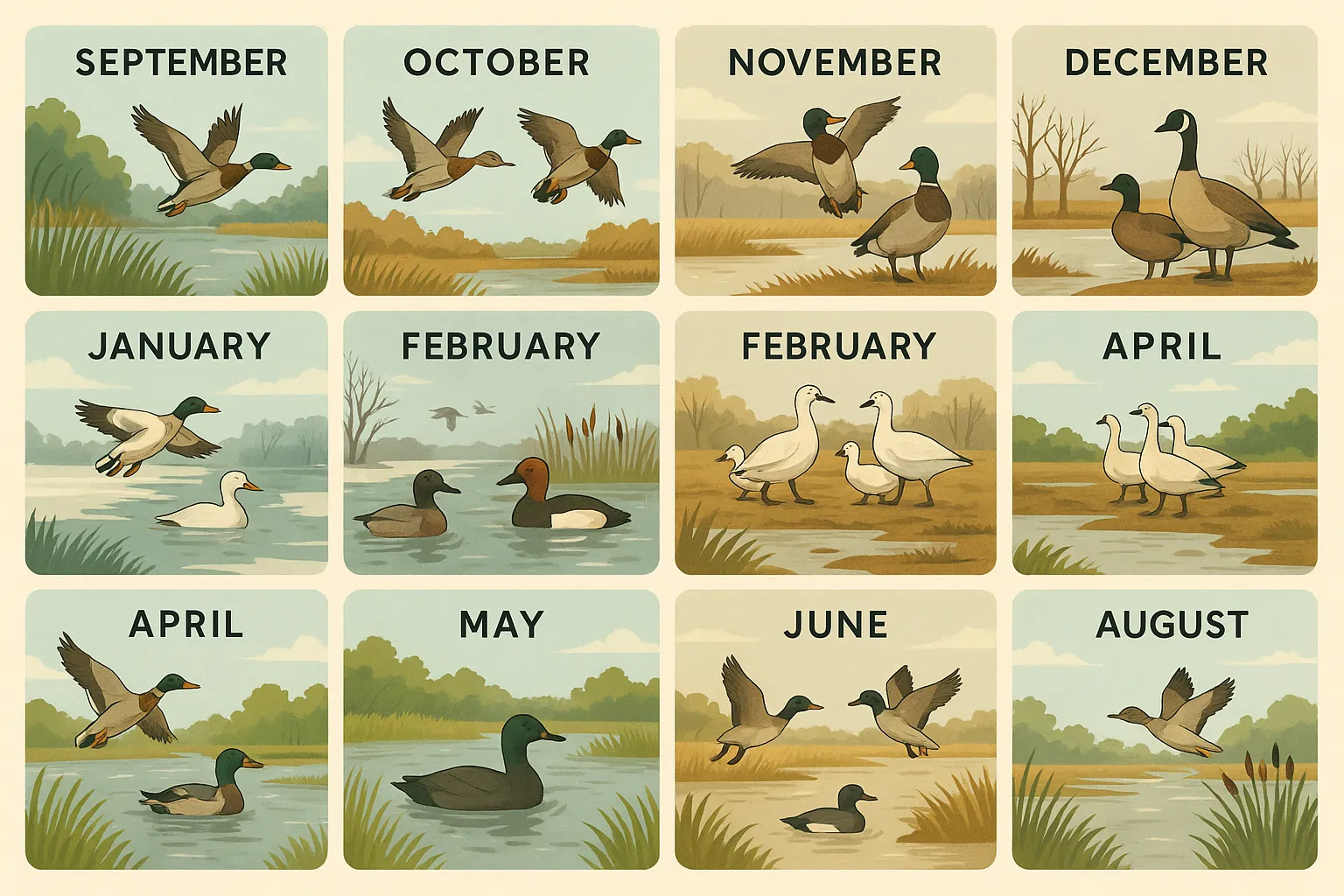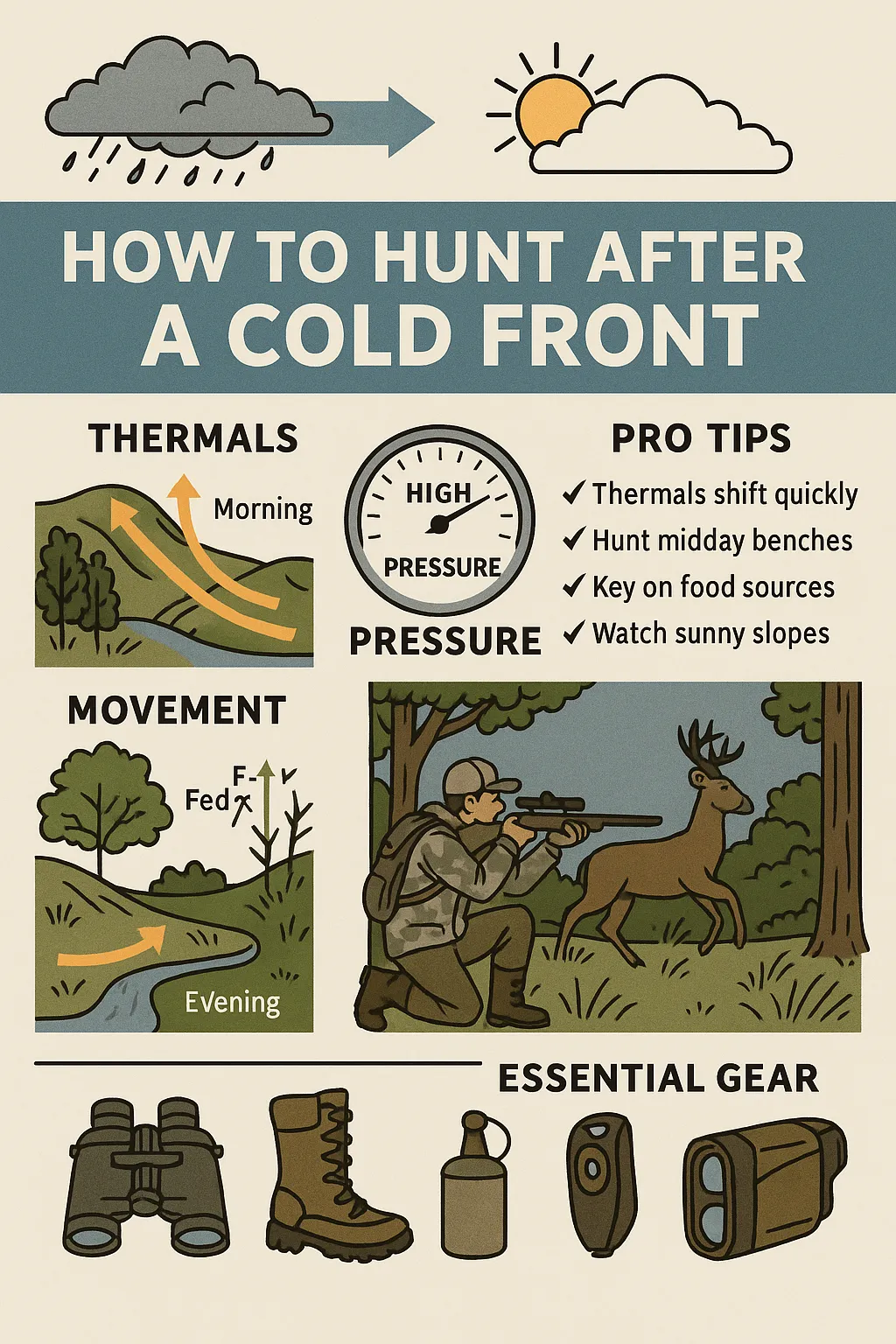
Hunting Waterfowl in the Mississippi Flyway: Monthly Breakdown
The Mississippi Flyway stretches from the boreal lakes of Canada to the flooded timber of Louisiana—a superhighway for ducks and geese riding the seasons south. For waterfowl hunters, timing and regional shifts are everything. Whether you’re scouting teal in September or chasing late-season mallards on frozen backwaters, understanding the monthly patterns of migration and habitat use is your edge.
This breakdown covers month-by-month tactics, behavior patterns, gear picks, and real-world strategies for getting under birds along the legendary Mississippi Flyway.
🦆 September: Early Teal & Local Openers
🧠 Bird Behavior:
-
Blue-winged and green-winged teal begin moving south with cold fronts
-
Local wood ducks feed on acorns and flooded browse
-
Pressure is light—birds respond to minimal calling and motion
📍 Tactics:
-
Focus on shallow sloughs, oxbows, and flooded ag fields
-
Scout roost-to-feed movement by glassing ponds at dawn
-
Set small spreads (6–12 decoys) with heavy motion
🎯 Gear Tip: Mojo teal spinner + jerk string combo for early-season movement
🎙️ “Teal season’s about speed—set quick, shoot fast, and reset. They’ll buzz you and be gone in seconds.”
— Tyler M., Missouri Delta
🍂 October: Divers & First Flights
🧠 Bird Behavior:
-
First push of northern mallards, gadwalls, and wigeon
-
Ringnecks and bluebills show up on big lakes and reservoirs
-
Cold snaps move birds fast—follow weather systems
📍 Tactics:
-
Scout reservoirs, rivers, and sheetwater for divers
-
Use 24–36 mixed decoys with slight current or spinner for visibility
-
Hunt secondary water to avoid opening-week pressure
🎯 Decoy Spread: Mix in coots and shovelers to add realism and contrast
🎙️ “We killed redheads and gadwall on the same point. The trick is finding that wind-sheltered cove right after a cold front.”
— Megan H., Western Kentucky
🦢 November: Peak Migration & Mallard Madness
🧠 Bird Behavior:
-
Mallards, pintails, and geese arrive in full force
-
Weather drives concentration—birds stack in food-rich stopovers
-
Vocalization increases—calling becomes more effective
📍 Tactics:
-
Target flooded timber, rice fields, and river oxbows
-
Run large spreads (36+ decoys) and call aggressively on windy days
-
Hide is everything—adjust blind grass and camo daily
🎯 Go-To Calls: Double reed mallard, whistle for pintail and teal
🎙️ “November’s when the timber lights up. Hit the holes with just enough sun and let the ducks work in tight.”
— Reggie T., Arkansas Delta
❄️ December: Cold Fronts & Smart Birds
🧠 Bird Behavior:
-
Late migrants arrive; mature birds become call-shy
-
Heavy pressure = nocturnal feeding and tight roosting groups
-
Geese become more dominant in mixed flocks
📍 Tactics:
-
Shift to afternoon hunts where legal—birds feed late
-
Downsize spread and reduce motion on bluebird days
-
Scout loafing ponds and mid-day refuge flyovers
🎯 Blind Tip: Use natural cover and mud walls for ultra-low-profile setups
🎙️ “When it’s clear and calm, we ditch the spinner and call soft. One drake whistle can finish a flock.”
— Jonah K., Illinois River Bottoms
🧊 January: Freeze Lines & Field Hops
🧠 Bird Behavior:
-
Birds stack below the snow/freeze line—often around major rivers
-
Cornfields, cattle ponds, and thermal springs become hot zones
-
Mallards and honkers dominate mixed bags
📍 Tactics:
-
Hunt river sandbars and backwater warm pockets
-
Field hunt with layout blinds on sunny days
-
Use full-body decoys and focus on small family groups
🎯 Best Setup: 18 full-body mallards, 12 Canada goose shells, no spinner
🎙️ “We field-hopped geese until 11AM, then floated the river for mallards. January’s all about flexibility.”
— Ben S., Mississippi River Bluffs
📦 Essential Flyway Hunting Gear by Month
| Item | Best For | Why It Matters |
|---|---|---|
| Breathable chest waders | October–January | Flexibility across warm/cold transitions |
| Jerk string decoy motion kit | September–October | Simple motion in calm water setups |
| Layout blind with stubble straps | December–January | Concealment in cut fields and open flats |
| Thermal camo gloves | Late November–January | Dexterity in freezing temps |
| Mallard hen + pintail whistle | October–January | Versatile finishing calls for wary birds |
-
Apps: Ducks Unlimited Migration Map, Duckr, Windy
-
Videos: Higdon Outdoors “Migration Tracker,” Realtree 365 Waterfowl Series
-
Communities: Flyway Federation, Waterfowlers USA, Delta Waterfowl Flyway Reports
💡 Pro Tip: Track snow lines and feeding patterns. The birds will tell you when they’re ready to work—don’t force it.
🌟 Final Shot: Adjust with the Migration
Hunting waterfowl in the Mississippi Flyway means more than setting decoys and waiting—it’s about timing, scouting, and adjusting with the birds. From teal zipping over rice paddies to late-season honkers backpedaling over corn, each month brings new behaviors, fresh setups, and endless opportunities.
“Every flight has a rhythm. If you listen to the wind, the water, and the wings—you’ll know exactly when to raise your gun.”
Leave A Comment
Related Posts
How to Hunt After a Cold Front: Pressure, Thermals & […]
Southeastern Hog Hunting Tactics by Month Feral hogs in the […]
Western Big Game Scouting – E-Scouting and Elevation Timing In […]





